
A frogman is someone who is trained in scuba diving or swimming underwater in a tactical capacity that includes military, and in some European countries, police work. Such personnel are also known by the more formal names of combat diver, combatant diver, or combat swimmer. The word frogman first arose in the stage name the "Fearless Frogman" of Paul Boyton in the 1870s and later was claimed by John Spence, an enlisted member of the U.S. Navy and member of the OSS Maritime Unit, to have been applied to him while he was training in a green waterproof suit.
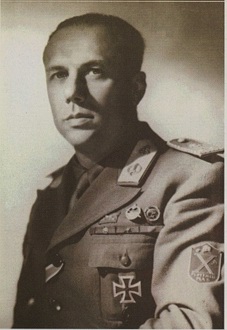
Junio Valerio Scipione Ghezzo Marcantonio Maria Borghese, nicknamed The Black Prince, was an Italian Navy commander during the regime of Benito Mussolini's National Fascist Party and a prominent hardline neo-fascist politician in post-war Italy. In 1970, he took part in the planning of a neo-fascist coup, dubbed the Golpe Borghese, that was called off after the press discovered it; he subsequently fled to Spain and spent the last years of his life there.
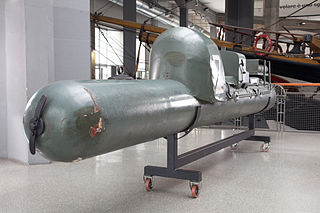
Human torpedoes or manned torpedoes are a type of diver propulsion vehicle on which the diver rides, generally in a seated position behind a fairing. They were used as secret naval weapons in World War II. The basic concept is still in use.

The Decima Flottiglia MAS was an Italian flotilla, with marines and commando frogman unit, of the Regia Marina. The acronym MAS also refers to various light torpedo boats used by the Regia Marina during World War I and World War II.
The Italian Special Forces include special forces units from several branches of the Italian Armed Forces: the Esercito Italiano (Army), the Marina Militare (Navy), the Aeronautica Militare and the Arma dei Carabinieri (Gendarmerie).

Italian submarine Iride was a Perla-class submarine built for the Royal Italian Navy during the 1930s. Originally, she was named Iris until July 1936, but was renamed shortly before her launch.

Marquis Luigi Durand de la Penne was an Italian Navy admiral who served as naval diver in the Decima MAS during World War II. He was born in Genoa, where he also died.

COMSUBIN is the Italian Navy's special operations unit. Italy was the first nation to use frogmen and human torpedoes. The Royal Italian Navy's Naval Assault Divisions are considered to be the precursor of modern Naval Special Forces. Their record can be traced back to World War I and the operation against the Austrian-Hungarian Battleship Viribus Unitis in Pula Harbour in 1918.

Teseo Tesei was an Italian naval officer, who invented the human torpedo used by the Regia Marina during World War II.
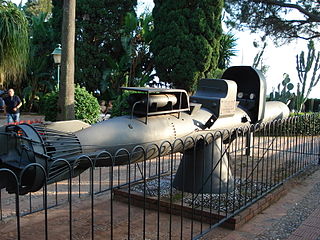
The Raid on Alexandria was carried out on 19 December 1941 by Italian Navy divers of the Decima Flottiglia MAS, who attacked and sank two Royal Navy battleships at their moorings and damaged an oil tanker and a destroyer in the harbour of Alexandria, Egypt, using Siluro Lenta Corsa manned torpedoes.
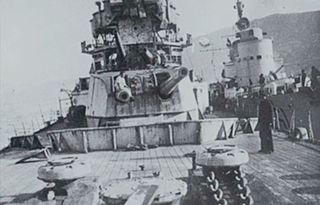
The Raid on Souda Bay was an attack by the Decima MAS (X-MAS), a specialist unit of the Regia Marina that used unconventional weapons. Decima MAS used explosive boats (MTM) against British ships lying in Souda Bay, Crete, during the early hours of 26 March 1941. The MTM explosive boats had been ferried from Astypalaia by the destroyers Francesco Crispi and Quintino Sella and launched at the approaches to the bay. After crossing the three boom defences, the MTM attacked the British heavy cruiser HMS York and the Norwegian tanker Pericles (8,324 GRT).

Spartaco Schergat was an Italian military frogman during World War II.

The Siluro San Bartolomeo was an Italian human torpedo designed during World War II, used by the Decima Flottiglia MAS for commando style operations. Some limitations had been noticed when using the Siluro Lenta Corsa human torpedo, demonstrating the need for an updated version. The project was managed and developed by the engineer of the Genio Naval, Mayor Mario Masciulli, with the help of Captain G.N Travaglino and engineer Guido Cattaneo. The improvement in the materials available for the assembly and parallel new technologies led to a far superior product to its precursor.

Mario Elbano Masciulli Manelli, Baron Miglianico was a prominent military engineer of the Italian Regia Marina, Major of Genio Navale and belonging to the recognized Decima Flottiglia MAS as director of the Office of Submarine Secret Weapons during Second World War. He was awarded the Silver Medal of Military Valor.
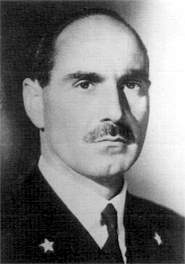
Gino Birindelli was an Italian admiral and chief of the fleet of the Italian Navy. After his retirement from the Navy, he was elected as a member of the lower house of Parliament for the neo-fascist Italian Social Movement.

Mario Marino was an Italian sailor of the Regia Marina during World War Two. As a diver and human-torpedo operator with the Decima Flottiglia MAS, he won the Gold Medal of Military Valour for the Raid on Alexandria on 19 December 1941. A 97-ton submarine-support speedboat of the Italian Navy launched in 1984 is named after him.

Mario Falangola was an Italian admiral during World War II.

Italian submarine Ambra was a Perla-class submarine built for the Royal Italian Navy during the 1930s. She was named after the gemstone amber.

Mario Giorgini was an Italian naval officer during World War II. He commanded the I Flottiglia MAS, the special operations unit of the Royal Italian Navy, from February 1940 until his capture during an attempt to carry out a manned torpedo raid on Alexandria in September of the same year. After the war he became an admiral in the Marina Militare.
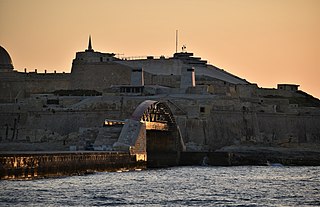
The Raid on Grand Harbour, was an Italian raid against Allied shipping in Grand Harbour, Valletta, Malta in the early morning of 26 July 1941 during the Second World War. MTM explosive motorboat pilots and Frogmen from the Decima Flottiglia Motoscafi Armati Siluranti of the Regia Marina conducted a raid to penetrate the harbour and attack British shipping. The attackers destroyed the St Elmo Bridge trying to enter the harbour, before being driven off by fire from the coastal defences.




















